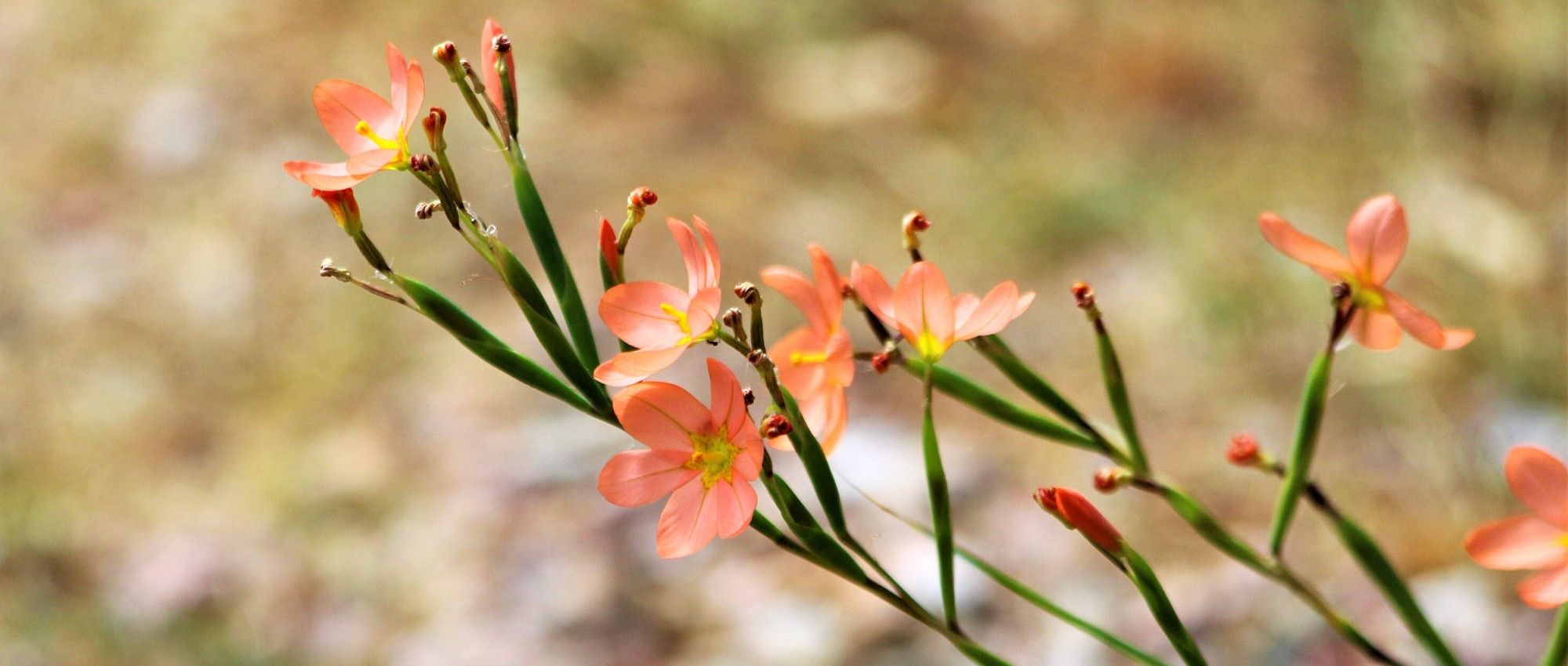
Moraea : Plant, cultivate and maintain
Contents
Moraea in a nutshell
- Moraea are rather rare South African bulbous plants in gardens!
- They produce stunning iris flowers in spring or summer, available in bright and colourful shades!
- A bit tender, they are particularly suited to regions with a mild climate, but can be grown in pots in other areas!
- They thrive in full sun and fertile, well-drained soil, and require dry soil during dormancy.
- They integrate easily into Mediterranean-style gardens or sunny rockeries.
A word from our expert
Moraea are stunning South African bulbous plants that are still relatively unknown but truly deserve a place in gardens! They offer elegant iris-like flowers in warm and bright shades in spring or early summer. The flowers come in a wide range of bright and colourful hues: yellow, orange, blue, white, purple… There are many bicoloured or tricoloured species, with flowers marked by complex and highly decorative patterns! This brings contrast and depth to the flowering. Discover, for example, Moraea huttonii, with yellow flowers veined in black, Moraea ochroleuca, with soft yellow tulip-like flowers, and Moraea flaccida, with salmon and yellow flowers.
Originating from South Africa, Moraea are rather tender plants. They can withstand temperatures dropping between -5 and -10 °C (depending on the species) for a short period. They are particularly suited to warm climates, especially in Mediterranean gardens, but can also be grown in pots in other regions. They prefer fertile, humus-rich, and very well-drained soils, as they are sensitive to winter moisture when in dormancy.
Botany
Botanical data
- Latin name Moraea sp.
- Family Iridaceae
- Common name Moraea, Cape Tulip
- Flowering between March and July, depending on the varieties and the climate
- Height between 20 and 60 cm
- Exposure full sun
- Soil type fertile, very well-drained, moist during the growth and flowering period
- Hardiness between -5 °C and -10 °C
The Moraea comprises 229 species of cormous plants native to Africa, primarily South Africa. They grow in meadows and on sandy slopes, sometimes at altitude. Many species are found in the Cape region, earning them the nickname Cape Tulips. They include, in addition to the “true” Moraea, plants that were previously grouped under the name Homeria. The latter have recently been renamed Moraea.
<Moraea are not very hardy; they can tolerate negative temperatures ranging from -5 to -10 °C, depending on the species. They are particularly suited to regions with a mild climate. However, in cooler areas, they can be grown in pots and brought indoors for the winter to protect them from the cold!
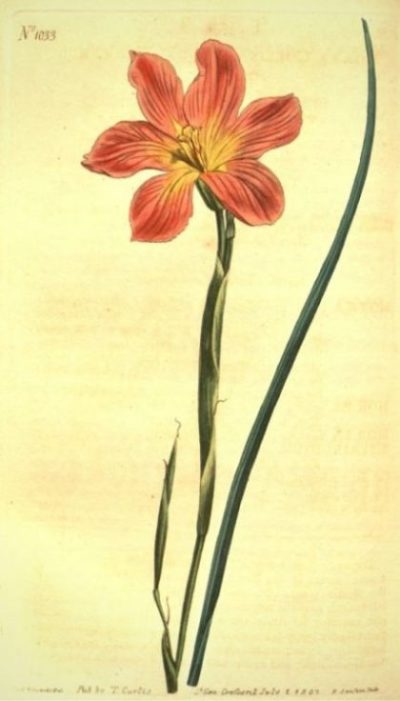
Moraea collina: Botanical illustration
The genus Moraea was first described in 1758 and was named in honour of the English botanist and politician Robert More (1703 – 1780). Recently, many species that were not originally part of it have been integrated into the genus Moraea. This includes, for example, the Iris sisyrinchium (Gynandris sisyrinchium), which has been renamed Moraea sisyrinchium, as well as Homeria, which are distinguished by their regular tulip-shaped flowers. The latter, comprising 32 species, can now be considered a subgenus of Moraea. They were named in honour of Homer, the Greek poet.
Moraea belong to the Iridaceae family, like many ornamental plants: this family includes Iris, gladiolus, Crocus, Crocosmias, Dierama, Ixia, Watsonia, Dietes, Freesia, Libertia, Sparaxis… Many species in this family are bulbous (or cormous) and exotic, rather tender.
Moraea do not form true bulbs in the botanical sense, but corms (like crocuses, gladiolus, crocosmias…). These storage organs are somewhat flatter than true bulbs and consist of a swollen stem (where the nutrient reserves are stored), surrounded by a few dried leaves that protect it. The inside of a corm has a solid and entire appearance, while the inside of a bulb is made up of a succession of scales (modified leaves), as in onions. However, the role is the same: to store nutrient reserves and water to survive the harsh season underground and thus be protected from the cold. At the end of winter, the plant draws on these reserves to produce new leaves and then flower.
To learn more about the difference between bulbs, corms, and rhizomes, check out this article on our blog.
Moraea form clumps of long, narrow, linear leaves, upright and trailing at the tips. The leaves are generally flat, but they can also be rolled up. Moraea typically measure between 20 and 60 cm tall. The Moraea huttonii is slightly taller than other species, as its flowers can reach up to 1.40 m in height at most.
Depending on the species and climate, Moraea bloom in spring or early summer (between March and July). The Moraea sisyrinchium blooms early, in March-April (sometimes as early as February!), while the Moraea huttonii blooms in June-July. After flowering, the foliage yellows and dries out, and the plant then enters dormancy, only to reappear the following spring.
In regions with a very mild climate, such as the Mediterranean basin, Moraea develop their foliage in autumn, bloom in spring, and then go dormant.
Moraea display beautiful flowers above their foliage, borne on upright, minimally branched stems. The flowers of Moraea resemble those of iris, with three small upright petals, three petaloid styles, and three large, colourful, drooping sepals that resemble petals. They typically measure 5 or 6 cm in diameter and are pleasantly fragrant. The flowers of the subgenus Homeria are regular and somewhat resemble tulip flowers, with six identical tepals.

The flowers of Moraea huttonii, M. tripetala, M. polystachya, and M. flaccida (photos: peganum / Peter Baker / Dirkus / John Englart)
Among the Moraea, there are plants that were once known by the genus name Homeria: these have very different flowers, as they do not resemble iris flowers but rather tulip flowers, which earns them the nickname Cape Tulips. Their flowers consist of three petals and three sepals that all have the same shape and generally the same colour (six tepals). In the centre, the flower has a long style that divides into three parts at the tip. Their flowers are yellow (Moraea ochroleuca) or orange (Moraea flaccida, M. comptonii). They can also be bicoloured, as in the case of Moraea elegans, which has striking flowers with three yellow petals and three orange petals (sometimes marked with black). Generally, the flowers are differently coloured in the centre, often yellow or a more intense colour than the rest of the petals.
The flowers of Moraea come in bright and colourful shades: yellow, orange, salmon, blue, white, mauve… Their warm hues are ideal for enlivening borders. Many species have contrasting flowers, with original floral patterns: macules, spots, lines… that stand out in one or two colours contrasting with the main colour of the flower. For example, Moraea aristata and M. atropunctata appear splattered with paint! We also appreciate the hue of the Moraea sisyrinchium, with its beautiful deep night-blue flowering! Among the Moraea with exceptional blooms, let’s not forget the Moraea tulbaghensis, which bears impressive bright orange flowers, speckled with metallic blue and black!
The flowers of Moraea are ephemeral: each flower lasts only a day or two. However, they can produce many flowers that succeed each other over a long period.
The flowers are pollinated by insects: they are very colourful, produce nectar, and are fragrant to attract them. In South Africa, they are pollinated by bees, flies, and beetles.
The leaves are long and narrow, linear, like grass leaves. They are generally flat but can also be rolled up. Those of Moraea huttonii can reach 1.50 m in length. They are upright and then trailing. Due to their fineness, the leaves of Moraea are relatively discreet compared to the flowering and are not particularly decorative… except for the species Moraea tortilis and M. pritzeliana, which have very original leaves, spirally rolled!
The foliage of Moraea is generally deciduous. After flowering, the leaves gradually yellow and dry out, and the plant then enters dormancy. An exception to the rule: Moraea angusta and M. spathulata are evergreen, retaining their leaves even in winter.
The fruit of Moraea is a capsule, initially green and then turning brown at maturity. It then opens by three valves to release the many brown seeds it contains.

The foliage of Moraea huttonii and Moraea vegeta (photos: peganum / Leonora Enking)
The main varieties of Moraea
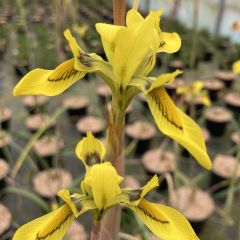
Moraea huttonii
- Flowering time July, August
- Height at maturity 90 cm
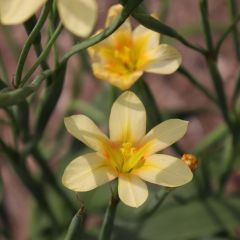
Homeria ochroleuca - Cape tulip
- Flowering time April, May
- Height at maturity 60 cm
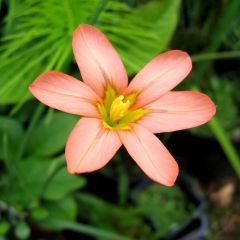
Homeria flaccida - Cape tulip
- Flowering time July, August
- Height at maturity 50 cm
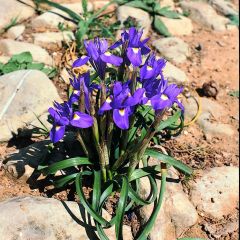
Gynandris sisyrinchium
- Flowering time April, May
- Height at maturity 30 cm
Discover other Perennials A to Z
View all →Available in 1 sizes
Available in 0 sizes
Available in 0 sizes
Available in 0 sizes
Available in 1 sizes
Available in 1 sizes
Available in 1 sizes
Available in 1 sizes
Available in 1 sizes
Available in 1 sizes
Young plantation
Where to plant?
Originating from South Africa, Moraea need warmth: they thrive in full sun and will appreciate a location sheltered from cold winds. Ideally, they should be placed, for example, at the foot of a sunny wall. Moraea huttonii also tolerates partial shade. Generally, Moraea prefer fertile soils rich in humus, but especially very well-drained as they are sensitive to stagnant moisture during dormancy (autumn-winter). Most of them enjoy cool soils in spring and summer, during their growing and flowering period, and then require dry soil afterwards. In the southern regions of France, for example, Moraea huttonii will benefit from being planted on the banks of a pond to enjoy the coolness of the soil (it flowers late and enters dormancy late in the year). Conversely, those that flower and enter dormancy early (like Moraea sisyrinchium) are well-suited to dry soils in summer, as they are then resting. They are the most adapted to the Mediterranean climate. Finally, regarding pH, Moraea prefer neutral or alkaline soils.
Moraea will find their place at the edge, in a sunny rockery, in an exotic or Mediterranean-style garden. For a more beautiful effect, we recommend planting them in groups. Maintain a distance of about 10 cm between the corms.
Moraea also adapt well to pot cultivation, which is very convenient for bringing them indoors and protecting them from the cold in winter. In spring, they can be taken out onto the terrace.
When to plant?
In regions with a cool climate, Moraea are planted in early spring, while in regions with a very mild climate, such as the Mediterranean basin, they can be planted in autumn. Moraea sisyrinchium, which flowers early in spring, is planted in autumn (September-October).
How to plant?
Planting in the ground:
- Start by digging a hole and loosening the soil to about 20 cm deep, to help the roots establish.
- Replace the bottom with a mixture of potting soil and coarse sand.
- Place the corms so that they are between 8 and 10 cm deep.
- Cover them with substrate.
- Lightly compact to ensure good contact between the corms and the substrate, and to avoid air pockets.
- Water generously.
Pot planting:
- Take a pot with drainage holes to allow water to flow out.
- Place a drainage layer at the bottom of the pot (for example, with clay balls, gravel, or broken pot pieces).
- Then add a mixture of potting soil and coarse sand.
- Place the corms so that they are buried about 10 cm deep.
- Cover them with substrate, then lightly compact.
- Water generously.
- Place the pot in a sunny location sheltered from the cold.
Feel free to check Ingrid’s article on our blog “Planting bulbs: 7 practical and useful tips”
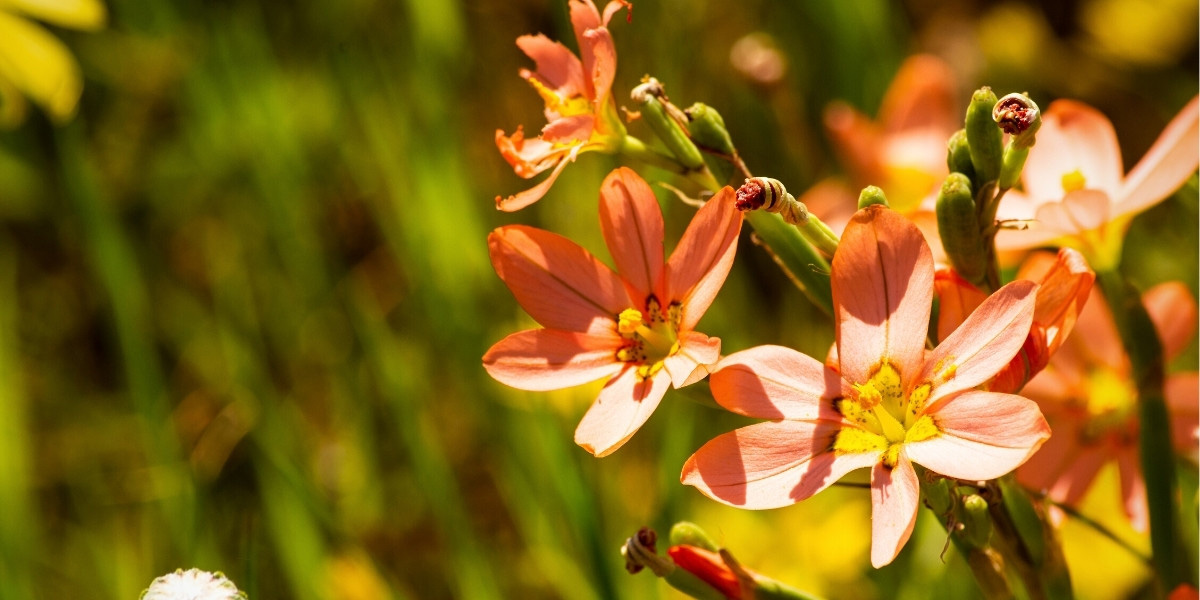 Moraea miniata
Moraea miniata
Maintenance
In the ground
Moraea need the soil to remain cool during their growth and flowering period (generally in spring and early summer): do not hesitate to carry out regular watering. You can also place a layer of organic mulch around the bulbs to retain soil moisture and reduce watering.
We advise you to remove faded flowers, both for aesthetic reasons and to encourage the plant to produce new flowers.
After flowering, the foliage gradually yellows and dries out: the Moraea then enters dormancy. Do not cut the leaves until they are completely dry. As long as they are still green, they are photosynthesising to allow the corm to build up its reserves before entering dormancy, to then flower again the following year.
As soon as the foliage begins to yellow, you can reduce watering and then stop it completely. The Moraea must remain dry during its dormancy period, otherwise the corm may rot.
In autumn, do not hesitate to cover the corms with a thick layer of mulch to protect them from the cold. However, if you live in a region with a cold climate, we recommend digging up the corms in autumn and storing them in a cool, dry place before replanting them in spring.
Moraea appreciate fertile soils: you can add some well-decomposed compost each year to enrich the soil.
In a pot
In a pot, water once or twice a week during the growth and flowering period. Be careful not to let water stagnate in the saucer. You can also add a little liquid fertiliser, which you will dilute in the watering water. As soon as the bulb is dormant, stop watering and fertilising.
Bring your Moraea indoors for winter under a frost-free, unheated shelter. Moraea are not houseplants; they are not meant to stay in a house or flat all year round. They prefer slightly cooler temperatures in winter than at other times of the year.
Diseases and pests
Moraea are not very susceptible to diseases and pests; however, slugs and snails sometimes nibble on their young shoots.
Multiplication
To multiply Moraea, the simplest and quickest technique is to divide the bulbils, although it is also possible to sow the seeds.
Sowing
Sow Moraea seeds in spring.
- Take a pot with drainage holes and fill it with a light, well-draining substrate, such as seed compost or a mix of compost and coarse sand.
- Lightly firm the substrate.
- Sow the seeds by spreading them over the surface.
- Cover them with a thin layer of substrate (they should be buried under 3 to 5 mm of compost), then gently firm down.
- Water with a fine spray.
Place the pot in a sheltered location with plenty of light. A temperature variation between day and night encourages germination: ideally, a daytime temperature of 22 to 25 °C and a nighttime temperature of 18 to 22 °C. Also, ensure that the substrate remains slightly moist until germination. As soon as the seedlings are large enough to handle, repot them into individual pots.
From seeds, it will take 2 to 3 years before the plants start to flower.
Division of Bulbils
As it grows, Moraea produces new small corms (bulbils) from the original corm. When the plant is well developed, it is possible to take these corms to replant them elsewhere and thus multiply the plant.
The division should be done in late summer or early autumn, when the plant is in dormancy. You can do this every three to four years on well-established and developed plants in the garden.
- We recommend marking the location of the Moraea you wish to divide beforehand, so you can easily find it when it is dormant.
- In late summer or early autumn, dig to remove the corms from the soil. Be careful to dig wide enough not to damage them.
- If necessary, remove any excess soil surrounding them.
- Gently separate the young corms.
- Replant them in a new location after preparing the ground, or plant them in pots.
- Water.
Unlike plants obtained from sowing, those from this division should flower the following year (unless the corms are very small).
Association
The Moraea sisyrinchium is particularly suited to Mediterranean gardens, as it requires warmth and enjoys dry soils in summer. Pair it, for example, with Aloe brevifolia, Dietes grandiflora, dwarf irises, Euphorbia characias, and Peruvian squills. Also consider aromatic plants: thyme, rosemary, lavender… Integrate agaves to benefit from their exceptional graphic quality and very exotic style! Don’t forget the decorative foliage of sedums and euphorbias. Finally, discover the splendid blue spike flowering of Madeira viper’s bugloss, Echium fastuosum!
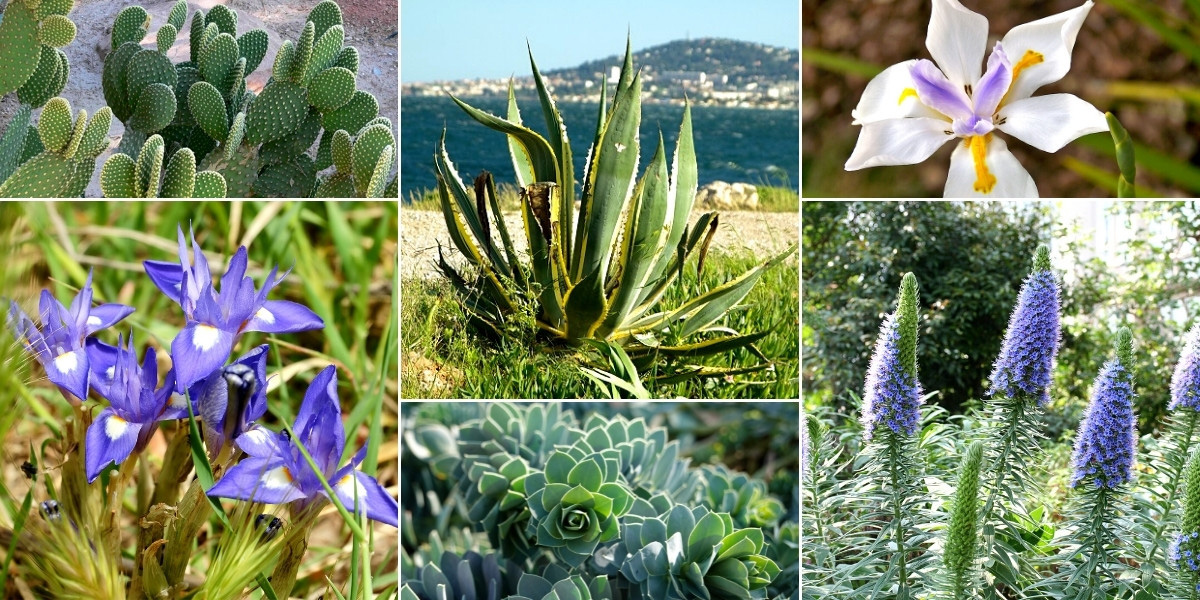
Opuntia microdasys, Agave americana ‘Variegata’, Dietes grandiflora, Moraea sisyrinchium (photo Hans Hillewaert), Euphorbia myrsinites (photo Guilhem Vellut) and Echium fastuosum
Moraea flaccida and Moraea ochroleuca will easily find their place in a sunny rockery. Plant them, for example, alongside Alyssum saxatile, Antennaria dioica, Arabis caucasica, Draba aizoides, and Erigeron karvinskianus. Bring in colour with the flowering of helianthemums, aubrietas, and carnations! Also consider the rock fern Cheilanthes lanosa, particularly drought-resistant. Enjoy the beautiful silvery foliage of Tanacetum haradjeni and Stachys byzantina. You can add a touch of lightness with the fine foliage of grasses: for example, by scattering a few clumps of Stipa tenuifolia or blue fescue in your rockery.
For more ideas and tips on designing a rockery, discover our guides “Creating a rockery: our tips for success” and “15 plants for designing a sunny rockery”

Cerastium tomentosum (photo Krzysztof Golik), Helianthemum ‘Elfenbeinglanz’, Cheilanthes lanosa (photo ghislain118), Moraea ochroleuca (photo Vahe Martirosyan), Gentiana acaulis and Draba aizoides (photo Ghislain118)
Useful resources
- Our advice sheet “How to store bulbs, before and after flowering?”
- Discover Ingrid’s article on our blog “Planting bulbs, 7 practical and useful tips!”
- Our advice sheets “Creating a rock garden: our tips for success” and “15 plants for designing a sunny rock garden”
- Subscribe!
- Contents































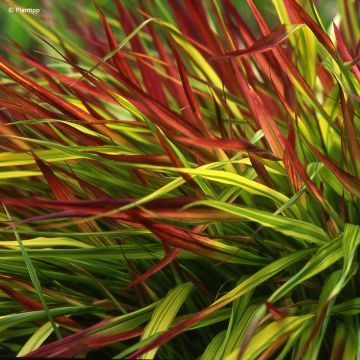
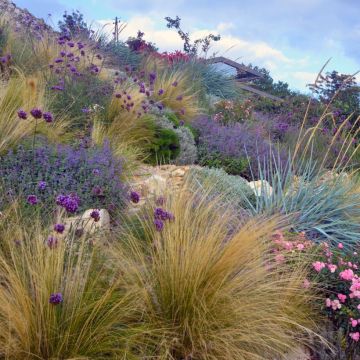
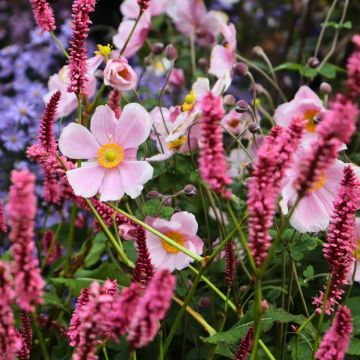
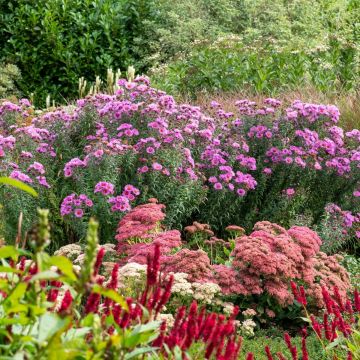
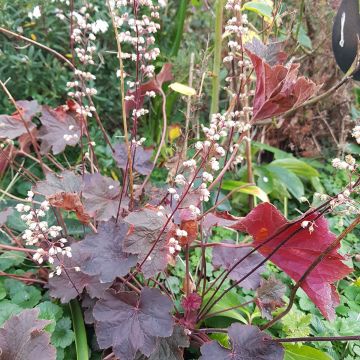
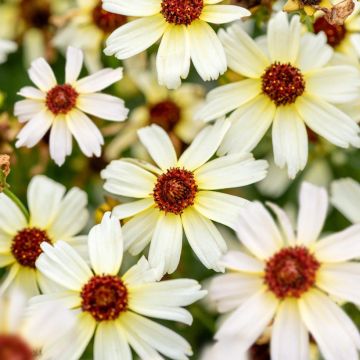
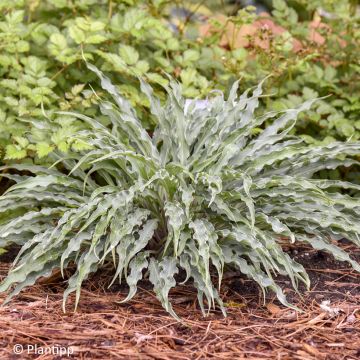
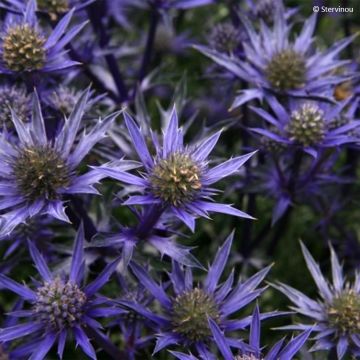
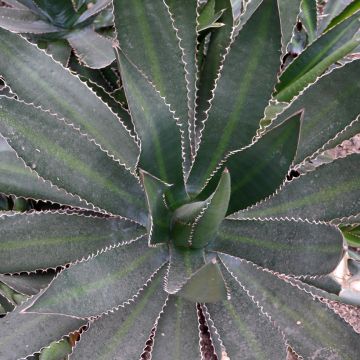
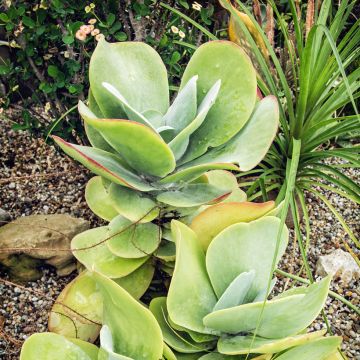
Comments